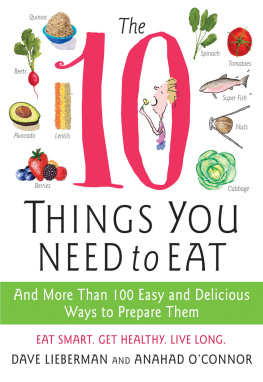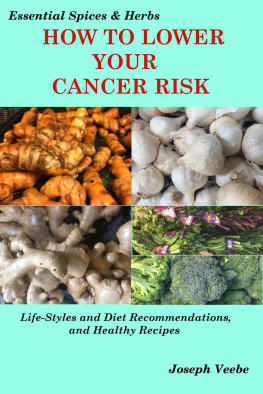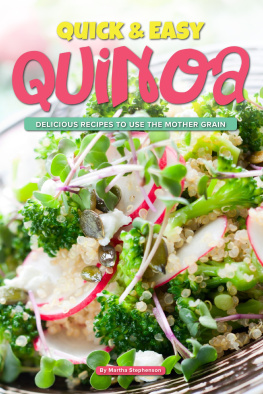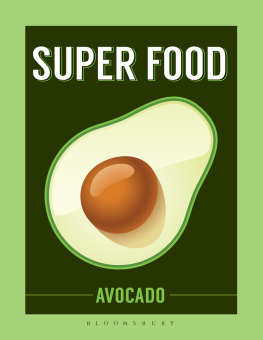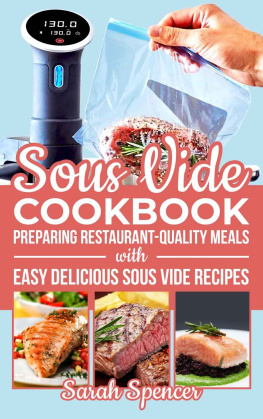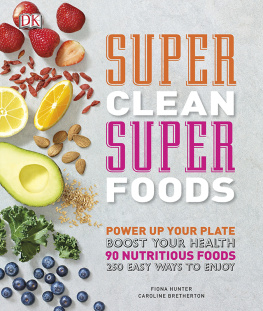At its core, this book is about the intersection of two polar, opposing forces that every American tries to balancethe desire to eat food that tastes great and the desire to eat food that wont kill you.
In any supermarket, packages slapped with labels announcing zero saturated fat contain foods spiked with artery-clogging trans fats instead. Meals packed with a days worth of cholesterol and ungodly amounts of sodium are called diet foods because theyre low in calories. Cookies loaded with sugar or artificial sweeteners are promoted as low in fat.
The average supermarket is stocked with more than thirty thousand items. But many of us end up making beelines through the aisles to fill our carts with the same grocery list of foods day in and day out. It is all too easy to get stuck with things that are full-flavored but nutrient-devoid. In a sedentary culture that promotes overeating and discourages exercise, these forces drive rates of diabetes, heart disease, and cancer ever higher.
In fact, surveys show that large numbers of Americans are so bombarded with confusing information that they arent sure exactly whats good for them, so they basically give up, deciding that trying to figure out how to change their eating habits is generally a waste of time.
The sad truth is that sitting in every grocery store in every city across America are basic foods whose health properties are well researched, well documented, and widely acceptedfoods that just might extend your expiration date. And yet many of these foods remain underused and underappreciated. Instead we turn to energy bars, health shakes, and other processed foods that clever marketers have dreamed up even though in reality they have few redeeming health benefits.
But it doesnt have to be that way, which is why we wrote this book. What you are about to read is a product of years spent navigating the same health food challenges.
When we met as college roommates a decade ago, our views on food could not have been farther apart. Dave had just returned from a year in Europe, doing some studying, but mostly eating, cooking, and drinkingand it showed. Anahad, on the other hand, was about as lean and lanky as a carrot stick. Anahad arrived at our dorm with beet juice and whole wheat pasta in hand. Dave arrived with cookbooks, German beer mugs, and a couple bottles of Italian wine. Anahad avoided sweets like the plague. Dave held fast to the mantra that if it tastes good, it is good.
For a long time, we winced at each others eating habits, first as buddies at Yale and then as roommates in New York. We seemed to get along everywhere except the kitchen.
As a health writer for the New York Times, Anahad was always trying to cut out the things chefs love most, like red meat, bacon, and butter. As a chef, Dave clung to these ingredients tightly and pointed out that Anahad was missing out big-time by subsisting on a diet of raw veggies, naked pastas, and whole grains with no added flavor to liven them up.
Not that this was Anahads fault. Anyone who tries to eat well knows what a challenge it can be. The foods that Americans tend to associate with satisfaction and deliciousness, like burgers, steaks, and fries, are also the ones that can make us fat and sick. But what if a person wants to eat healthfully without living the life of a culinary monk? Well, thats where things get interesting. And by interesting we mean really, really confusing.
Once we started actually considering each others dietary perspective, we hit on something that united us first in a common frustration and then, ultimately, in a common purpose.
When we started looking for a happy medium between health and good taste, we were dumbfounded by what we encountered. It seems that in this age of conflicting studies, diet fads, and junk foods masquerading as health foods, even people who seek out the healthiest of health foods are left to wonder which ones are really all theyre cracked up to be.
The hottest trend in the health food area right now is the rise of so-called superfoods. There is no shortage of superfoods, and you can find dozens upon dozens of them with wonderfully healthful properties. But going around eating a series of unprepared, individual foods is hardly a substitute for sitting down to a proper meal.
To be turned into meals, foods have to be attainable, enjoyable, and easy to work with in the kitchen. But when you take a look at the list of the superfoods trumpeted about these days, how many of them are actually affordable, tasty, and easy to incorporate into everyday cooking?
Acai berries, for example, are touted as the latest great thing, but theyre expensive and not very versatile. Its not as if you can find a bag of them at your local supermarket to sprinkle some on your morning bowl of oatmeal. Then theres wheatgrass. Walk into any health food store or juice bar in the country and youll get a sales pitch on its amazing benefits. But have you actually tasted this stuff?! And weve been told a hundred times that cantaloupe is a superfood. But come on. Theres precisely one way to eat it, it tastes good only a couple months out of the year, and during the rest of the year its flavorless and not worth the price.
So while there are many incredibly healthy foods out there, it seems unrealistic to expect that most of them will be incorporated into the average persons daily eating routine.
Thats how we came to the conclusion that if we really wanted to help ourselves and others, the focus needed to be on those foods that were incredibly healthy but also affordable, appealing, and versatile in the kitchen. It seemed like such a simple idea, but we didnt really hear anyone else talking about it. And thats when we decided to write this book.
We scoured the superfood landscape, looking for foods that met three criteria: scientifically supported health benefits, extremely easy to find, and so versatile that we could easily build a complete and varied repertoire of home-style, satisfying, and delicious meals around them. Anahad came up with about twenty foods that he felt were scientifically supported as being extraordinarily beneficial to health. He passed this list on, and Dave combed through it with an eye to availability, appeal, and versatility. The list of twenty became ten.
So here you have it: The 10 Things You Need to Eat: And More Than 100 Easy and Delicious Ways to Prepare Them . Its the product of a decade-long friendship and a decade-long journey through the American food universe that have turned us both into sticklers for fresh, clean, and responsibly produced food. Today we can proudly say that we share the same food philosophy: Make it good, but make it healthy.
Enjoy!
Dave and Anahad

